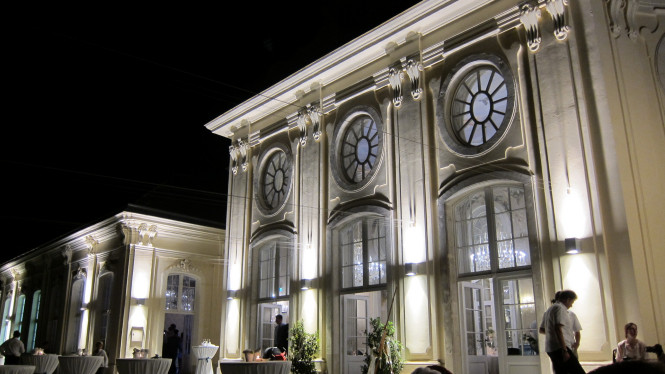Fortunately, during the construction of the New Palace (Blauer Hof) the Old Palace was not demolished and so both castles exist today, although they suffered greatly during the war.
The Old Palace dates back to the 13th century and came into the possession of the Habsburgs in the 14th century. After the Second World War and a thorough renovation, the Old Palace belongs to the Laxenburg Betriebsgesellschaft and houses the Austrian Film Archive.
Laxenburg came into the possession of Maria Theresia in the 18th century after several renovations by Lucas v. Hildebrandt and others. She enlarged the complex to include
the "Blaue Hof" (= New Palace) and outbuildings, which served the courtly pleasure.
The newly married Empress Elisabeth spent her honeymoon here with her Franz Joseph. The young marriage luck was overshadowed by a massive diplomatic crisis in connection with
the Crimean War. Emperor Franz Joseph had to travel every morning from Laxenburg to the Vienna Hofburg.
In order to escape boredom, Elisabeth - to the chagrin of her mother-in-law - explored the surroundings on her own. It was not only that spontaneous rides without appropriate accompaniment were regarded as improper behaviour for the empress's position: such adventures also represented a high security risk for Elisabeth.
Here in Laxenburg Elisabeth gave birth to Gisela in 1856 and two years later to Rudolf. The baptism of the two children took place in the oval hall of the dining rooms. Rudolf later spent his honeymoon in Laxenburg with his wife Stefanie of Belgium.


Inside the dining room there is the famous large oval dining room, whose walls are divided by architectural painting; the ceiling fresco by Vinzenz Fischer shows Putti hunting for falcons and gives this room a breathtaking appearance. It is often used for weddings.

The square in front of the castle on the garden side, on the occasion of a wedding celebration




